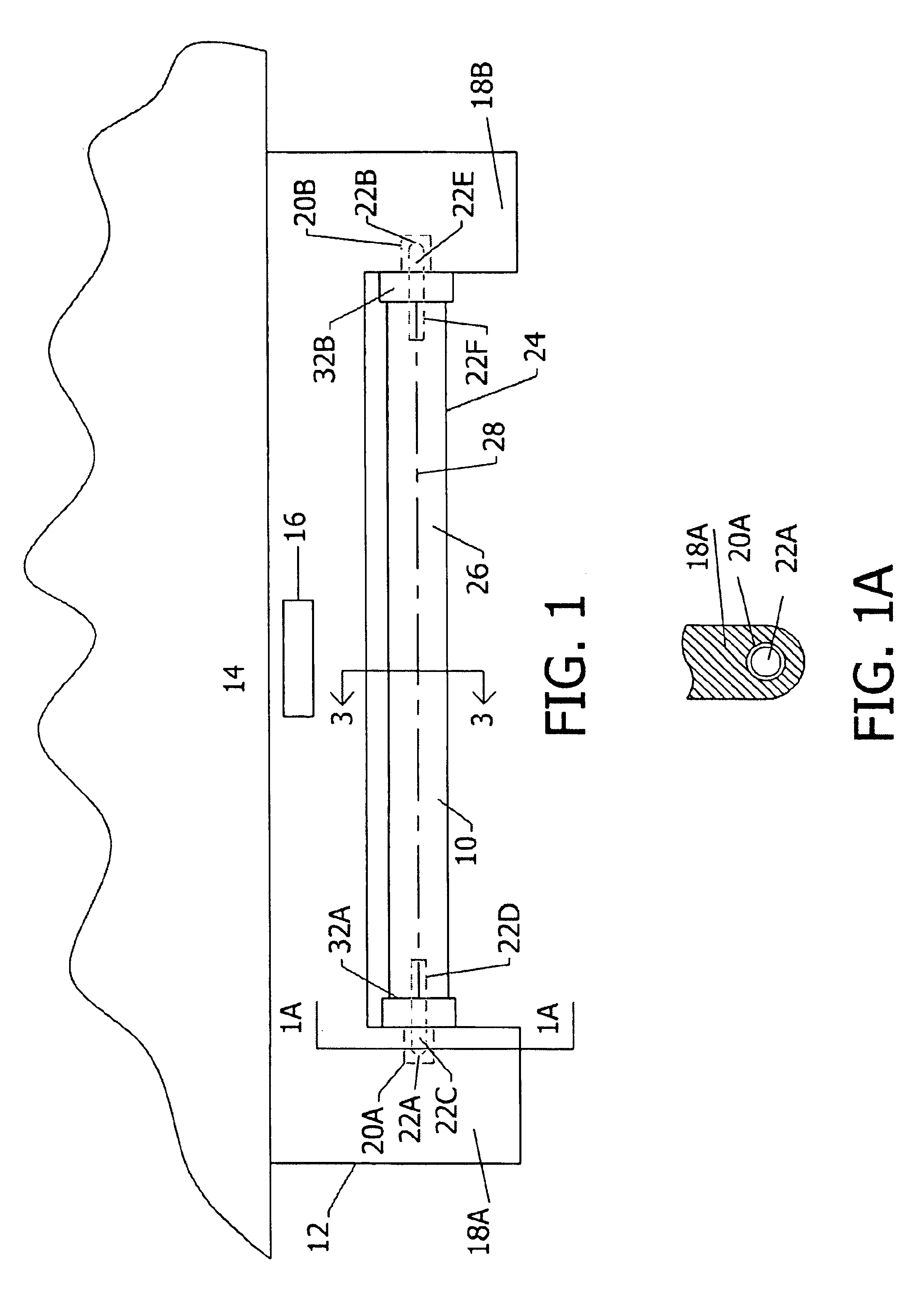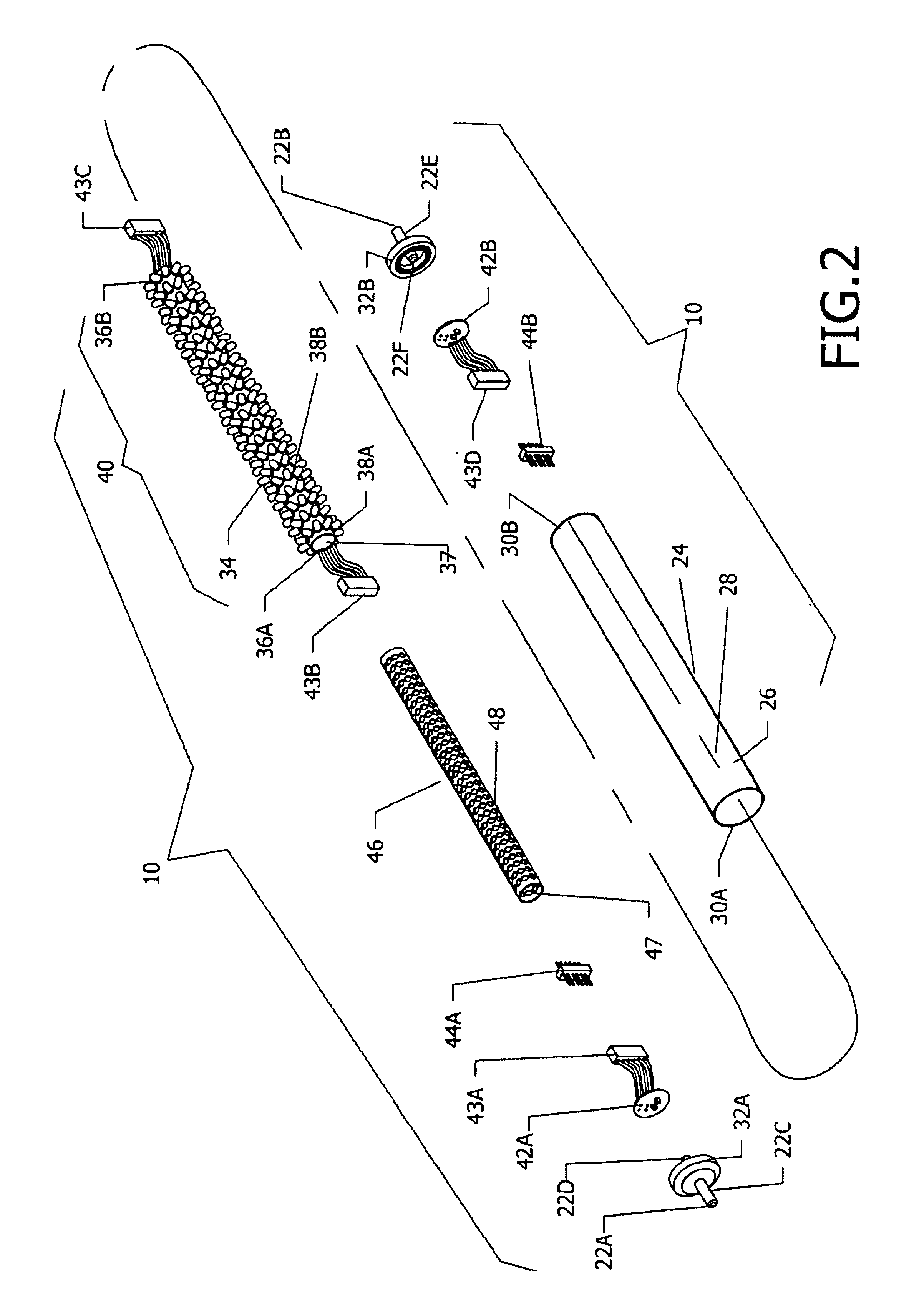LED retrofit lamp
a retrofit lamp and led technology, applied in the field of lamps, can solve the problems of inability to directly connect fluorescent lamps to alternating current power lines, overheating and eventually destroying themselves, and additive approaches that do not reduce or eliminate the amount of hazardous mercury in the environment, so as to achieve softer and warmer light output, improve the effect of thermal performance and lightening and more superior thermal performan
- Summary
- Abstract
- Description
- Claims
- Application Information
AI Technical Summary
Benefits of technology
Problems solved by technology
Method used
Image
Examples
Embodiment Construction
Reference is now made to the drawings and in particular to FIGS. 1-10 in which identical of similar parts are designated by the same reference numerals throughout.
An LED lamp 10 shown in FIGS. 1-10 is seen in FIG. 1 retrofitted to an existing elongated fluorescent fixture 12 mounted to a ceiling 14. An instant start type ballast assembly 16 is positioned within the upper portion of fixture 12. Fixture 12 further includes a pair of fixture mounting portions 18A and 18B extending downwardly from the ends of fixture 12 that include ballast electrical contacts shown as ballast end sockets 20A and 20B that are in electrical contact with ballast assembly 16. Fixture sockets 20A and 20B are each single contact sockets in accordance with the electrical operational requirement of an instant start type ballast. As also seen in FIG. 1A, LED lamp 10 includes opposed single-pin electrical contacts 22A and 22B that are positioned in ballast sockets 20A and 20B, respectively, so that LED lamp 10 i...
PUM
 Login to View More
Login to View More Abstract
Description
Claims
Application Information
 Login to View More
Login to View More - R&D
- Intellectual Property
- Life Sciences
- Materials
- Tech Scout
- Unparalleled Data Quality
- Higher Quality Content
- 60% Fewer Hallucinations
Browse by: Latest US Patents, China's latest patents, Technical Efficacy Thesaurus, Application Domain, Technology Topic, Popular Technical Reports.
© 2025 PatSnap. All rights reserved.Legal|Privacy policy|Modern Slavery Act Transparency Statement|Sitemap|About US| Contact US: help@patsnap.com



